Journal list menu
Export Citations
Download PDFs
Table of Contents
Rethinking Chemistry
- First Published: 30 August 2023
Climate change, loss of natural resources, and geopolitical conflicts are some of the global challenges humanity faces. As chemists, we have the unique possibility and the duty to contribute to a livable future for all. “Rethinking Chemistry” is the motto of the German Chemical Society Science Forum Chemistry (WiFo) 2023 to address these challenges as the guiding principle of all our endeavors and actions.
Adaptive Catalytic Systems for Chemical Energy Conversion
- First Published: 22 June 2023

While the use of biomass, CO2, and green hydrogen has reached a significant level of maturity, the need to re-consider our ways of operating chemical production processes becomes obvious. The fluctuation associated with renewable energy and feedstock holds challenges for catalysts to cope with the resulting dynamics. However, new opportunities arise once catalyst design starts to aim at performance that is adaptive rather than task-specific.
Minimum Information Standards in Chemistry: A Call for Better Research Data Management Practices
- First Published: 08 November 2022

Electronic lab notebooks (ELN) and laboratory information systems (LIMS) allow data management and simplification of research and publication. Minimum standards for information management are urgently needed to support chemists with the reporting of their data in a structured manner. The time is ripe to liberate data and make it findable, accessible, interoperable, and reusable (FAIR) for all.
Achieving Digital Catalysis: Strategies for Data Acquisition, Storage and Use
- First Published: 31 May 2023
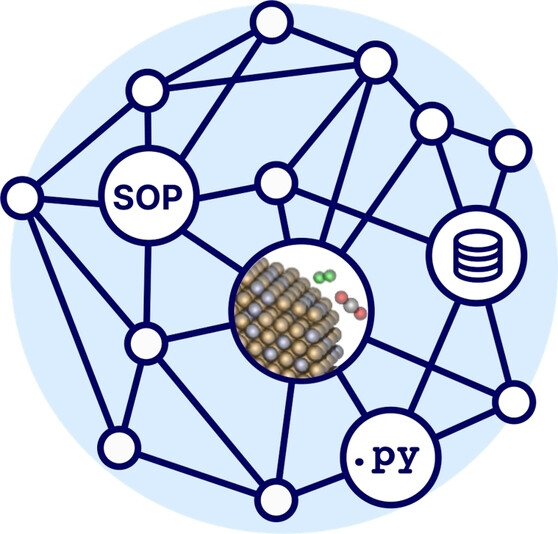
In catalysis, a paradigm shift in data acquisition and management is needed to address the challenges in developing high-performance, stable, scalable, and cost-effective catalysts for energy storage and sustainable, climate-neutral chemical synthesis. Considering the scientific principles of catalysis, the requirements for the future research data infrastructure are discussed.
Chemical Solutions to the Current Polycrisis
- First Published: 09 May 2023
Spectro-Microscopic Techniques for Studying Nanoplastics in the Environment and in Organisms
- First Published: 24 October 2022
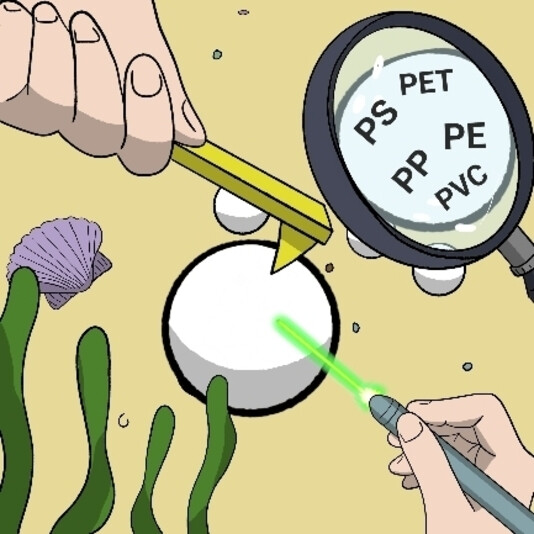
Nanoplastics (NPs) pose a threat to the environment and human health but are challenging to detect and characterize in environmental samples. This Minireview covers established imaging and characterization techniques, with a focus on micro-spectroscopic techniques. More exotic advanced techniques to measure NP morphology and chemical fingerprints simultaneously are discussed, and challenges in detection of NPs using high-resolution imaging are outlined.
Mechanochemical Degradation and Recycling of Synthetic Polymers
- First Published: 01 April 2023
Charge-Transfer and Spin-Flip States: Thriving as Complements
- First Published: 04 October 2022

Charge-transfer excited states have been at the focus of inorganic photochemistry for decades, together with their strongest opponents: detrimental metal-centered states. In recent years, interest in metal-centered spin-flip states was reignited by a new type of photoactive chromium(III) complex. This Review delineates similarities and unique features of charge-transfer and spin-flip states, from fundamentals to applications.
Sustainable Design of Structural and Functional Polymers for a Circular Economy
- First Published: 05 October 2022

Structural and functional polymers provide functions, sustainability benefits, and CO2 savings during their use phase, but present challenges at end of life. Polymer science and adjacent disciplines can enable a circular economy of polymers via biodegradation or recycling through the application of strategies for molecular and system design that leverage the latest advances in the field.
On-Surface Synthesis of Polyphenylene Wires Comprising Rigid Aliphatic Bicyclo[1.1.1]Pentane Isolator Units
- First Published: 01 March 2023
London Dispersion Favors Sterically Hindered Diarylthiourea Conformers in Solution
- First Published: 11 May 2022
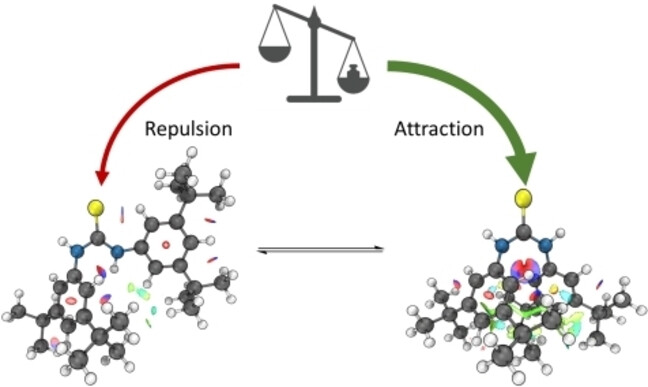
Steric crowding counterintuitively favors the folded and apparently more sterically hindered syn–syn conformer of N,N′-diphenylthiourea derivatives. Combined experimental and computational analyses identified London dispersion interactions to be the decisive factor favoring the conformer equipped with bulky dispersion energy donor groups.
S,O-Ligand Promoted meta-C−H Arylation of Anisole Derivatives via Palladium/Norbornene Catalysis
- First Published: 31 May 2022

A highly efficient meta-selective C−H arylation of aryl ethers has been realized by a new catalytic system based on palladium/norbornene (Pd/NBE) and an S,O-ligand. The reaction proceeds with a broad range of aryl ethers. For the first time, unsymmetrical meta-diarylation of aryl ethers was accomplished using a novel norbornene. The isolation of palladium intermediates provides insight to the mechanism.
Supramolecular Chalcogen-Bonded Semiconducting Nanoribbons at Work in Lighting Devices
- First Published: 11 March 2022

Chalcogen-bonded p-type semiconducting ribbons have been engineered through the self-assembly of tailored π-conjugated modules. Theoretical studies of the electronic states showed the presence of a local charge density between Te and N atoms. Implementation of the ribbons as hole-transport layers in light-emitting electrochemical cells gave rise to devices with performances similar to those obtained with state-of-art semiconductors.
Synthesis of a Blue-Emissive Azaborathia[9]helicene by Silicon-Boron Exchange from Unusual Atropisomeric Teraryls
- First Published: 13 May 2023
![Synthesis of a Blue-Emissive Azaborathia[9]helicene by Silicon-Boron Exchange from Unusual Atropisomeric Teraryls](/cms/asset/02c67c05-66cb-4e3e-9d48-f040a7dbec95/anie202304291-toc-0001-m.jpg)
A blue-emissive azaborathia[9]helicene was synthesized from atropoisomeric triisopropylsilyl-substituted teraryls with nearly parallel oriented isoquinoline moieties via silicon-boron exchange, a new method for the preparation of azaboroles. The target helicene, consisting of two thienoazaborole motifs, shows excellent configurational stability and a luminescence quantum yield of 0.17.
Photocatalytic Arylation of P4 and PH3: Reaction Development Through Mechanistic Insight
- First Published: 02 September 2021
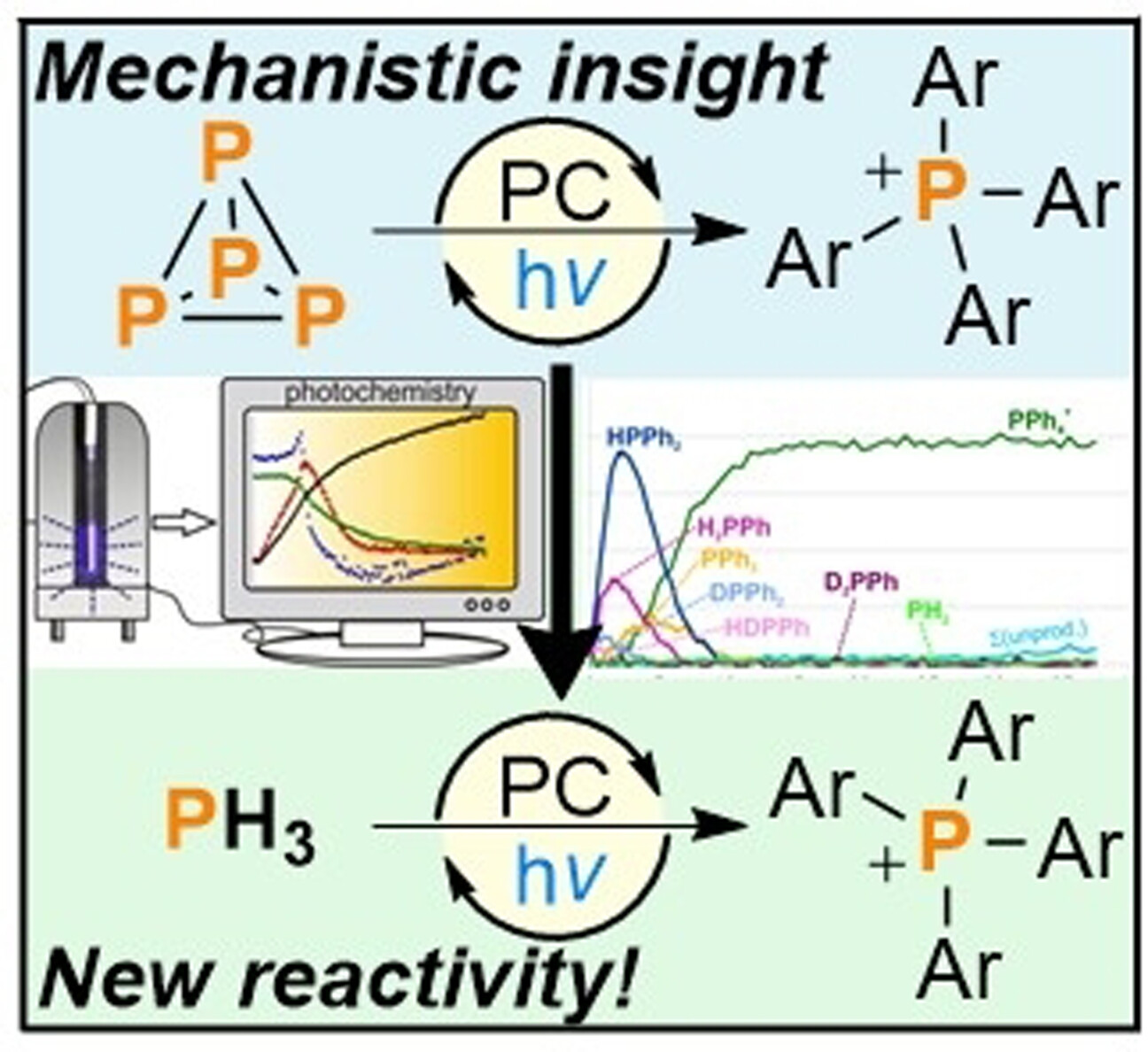
31P{1H} NMR spectroscopic studies provide significant, new insights into the mechanism of the recently reported photocatalytic arylation of white phosphorus (P4). Through the first-time observation of a series of reaction intermediates, these studies have also inspired the development of the first examples of direct, catalytic arylation of PH3, which is a key synthetic intermediate for industrial phosphorus chemistry.
Dynamic Exchange of Substituents in a Prebiotic Organocatalyst: Initial Steps towards an Evolutionary System
- First Published: 27 October 2021
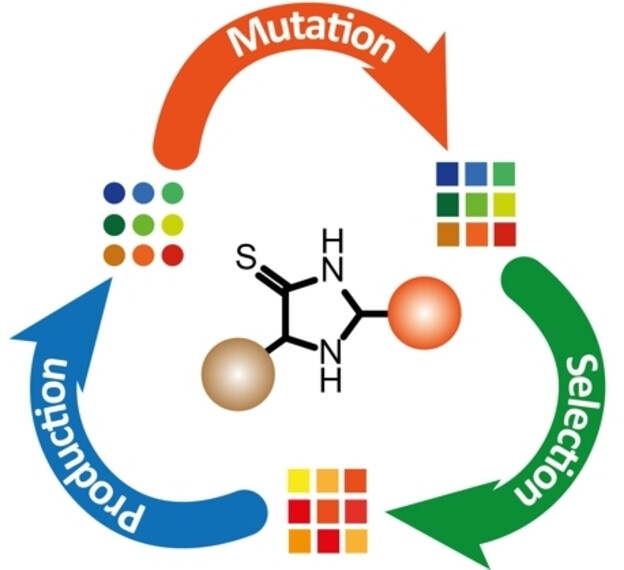
Prebiotically plausible imidazolidine-4-thione organocatalysts are able to dynamically adapt to their environment by mutation of their own structure. Depending on the surrounding conditions, a distinct preference for certain species was identified, that correlates with the catalytic activity. This variation and selection mechanism allows for ongoing evolution of catalytic properties to create the complex diversity of life.
The Regioselective Solid-State Photo-Mechanochemical Synthesis of Nanographenes with UV light
- First Published: 24 February 2023
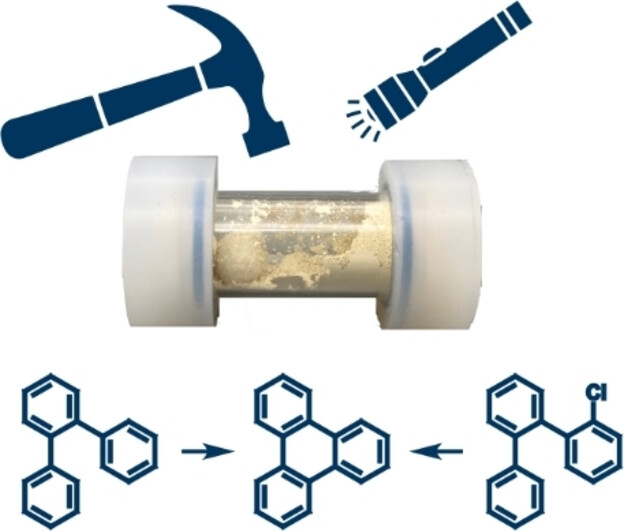
Photochemistry and mechanochemistry have been combined to synthesize nanographenes in the complete absence of bulk solvents. The concept is showcased with two reactions—the Mallory reaction and the cyclodehydrochlorination, both applicable to the intramolecular formation of C−C bonds. Moreover, the approach can even form these bonds regioselectively in larger systems—something not possible before in mechanochemistry.
Synthesis and Reactivity of a Neutral Homocyclic Silylene
- First Published: 19 November 2021

The neutral homocyclic silylene 2 was obtained from a bicyclic silicon(I) amide J. This reaction proceeds via the anionic homoaromatic ring compound 1. The two-coordinate Si-atom in 1 is stabilized via a 3-center 2-electron π-bond and that in 2 via an allyl-type π-electron delocalization. Compound 2 undergoes cycloadditions with alkenes and alkynes and oxidative addition with methanol. The reaction with ethylene yields a tricyclic ring species.
Enhancing the Hydrogen Evolution Reaction Activity of Platinum Electrodes in Alkaline Media Using Nickel–Iron Clusters
- First Published: 06 March 2020
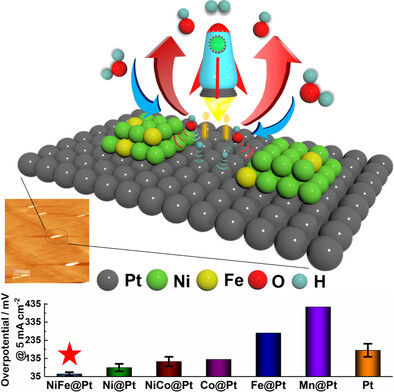
HER we go: An improved alkaline HER performance was achieved by modifying Pt(111) and nanostructured Pt electrocatalysts with nickel-iron clusters. The activity was optimized by varying the Ni:Fe ratio, the coverage of the metal cluster, and the electrolyte composition. This improvement yields a more favorable balance between benefiting water dissociation and preventing *OH “poisoning”.
Multimodal Analysis of Light-Driven Water Oxidation in Nanoporous Block Copolymer Membranes
- First Published: 06 March 2023
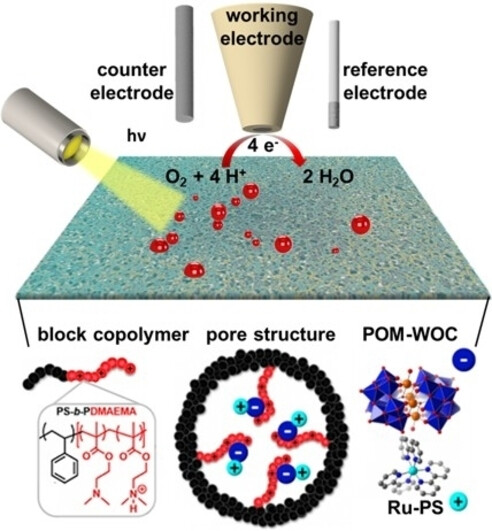
Nanoporous block copolymer membranes functionalized with a polyoxometalate water oxidation catalyst (POM-WOC) and a light-absorbing ruthenium complex were probed and characterized using operando scanning electrochemical microscopy, ex situ spatially resolved micro-X-ray fluorescence spectroscopy, and scanning transmission electron microscopy. Molecular scale information was obtained about the spatial distribution and catalytic performance of the membrane.




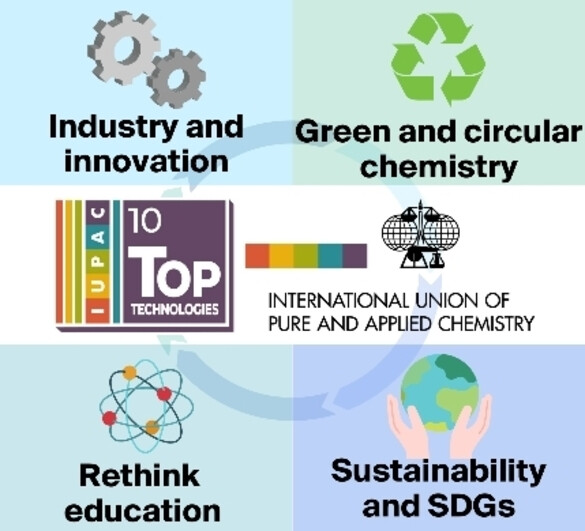
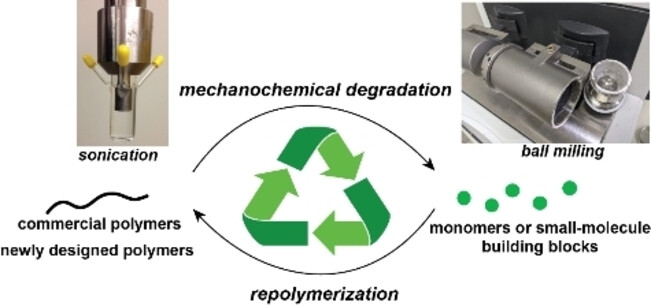
![On-Surface Synthesis of Polyphenylene Wires Comprising Rigid Aliphatic Bicyclo[1.1.1]Pentane Isolator Units](/cms/asset/e2a78d8b-ab22-472c-a007-9cc70da706f6/anie202218211-toc-0001-m.jpg)


































